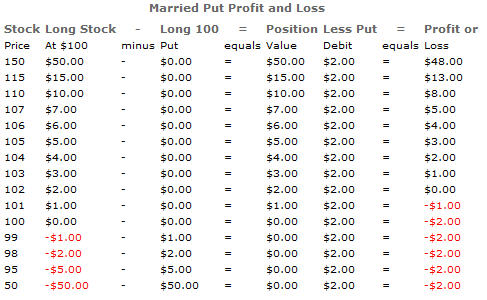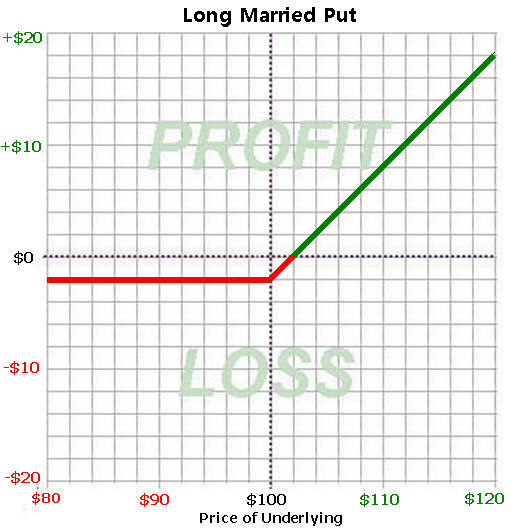Definition
A Married Put (aka Synthetic Long Call) consists of purchasing 100 shares of stock and insuring that purchase by also purchasing a put option at a strike price equal to or lower than the current stock level. Example: Buy stock for $100 per share and buy ONE 100 put for $2 or $200 per contract. This formula works regardless of the underlying’s price.
Objective
To profit from upward movement in the chosen underlying while insuring against downside losses.
Maximum Risk
The original purchase price of the stock LESS the put strike PLUS the premium paid from the put purchase [eg [($100 stock – 100 strike price) + $2 paid on put purchase] *100 shares = ($0 + $2) * 100 = $200 per married put position].
Maximum Profit
Unlimited upside profit.
Benefits
Married puts are usually the first option strategy traders learn that protects their long stock ownership from significant downfalls in the stock price. They allow traders to benefit from upward movement in the stock while protecting them from large losses to the downside. Break-even (B/E): This is the price the stock must remain above at expiration for the trade to breakeven. The break-even of a married put is equal to the stock purchase price PLUS the premium paid for the put option. If you bought stock for $100 and bought the 100 put for $2, the B/E would be $102 (100 stock purchase price + $2 debit from long put). If the stock closes at expiration lower than the B/E a loss will occur. If the stock closes above the B/E on expiration a profit occurs. The chart below illustrates what happens at expiration (no time value is left) at various stock prices:

Many have an easier time understanding strategies when looking at profit and loss graphs. The graph below shows what the Married Put looks like.

